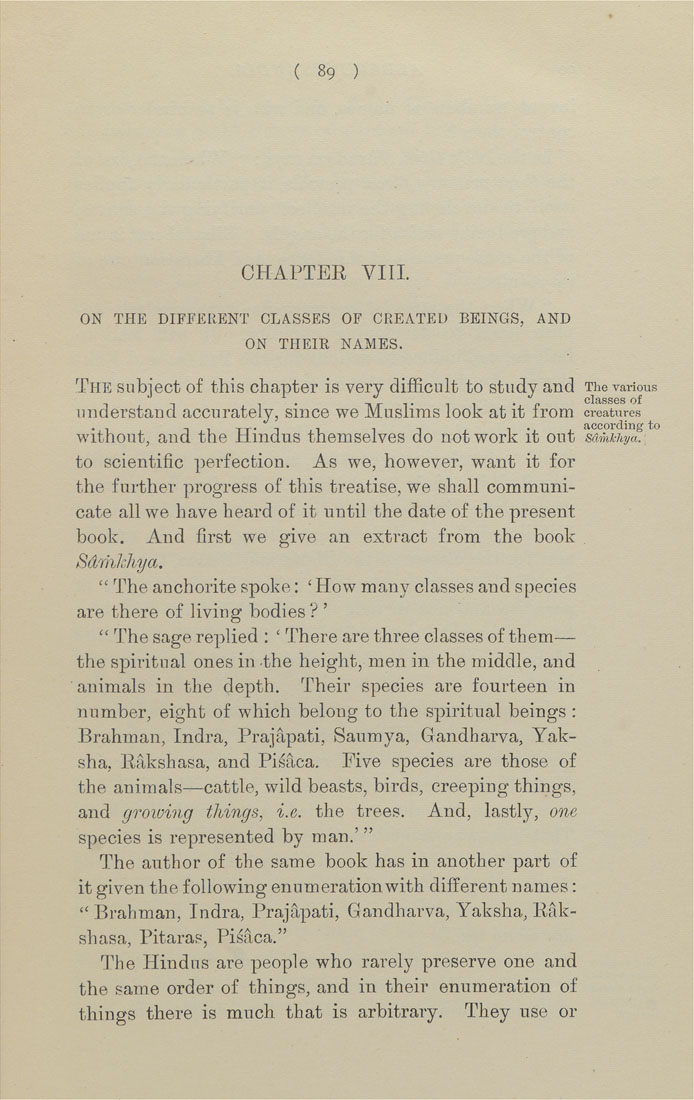Bīrūnī, Muḥammad ibn Aḥmad, Alberuni's India (v. 1)
(London : Kegan Paul, Trench, Trübner & Co., 1910.)
|
||
|
|
|
|
| Page 89 |

CHAPTER Vm. ON THE DIFFERENT CLASSES OF CREATED BEINGS, AND ON THEIR NAMES. The subiect of this chapter is very difficult to study and The various classes of understand accurately, since we Muslims look at it from creatures • 1 -, , TT- T 1 IT 1 • J according to Without, and the Hindus themselves do network it out sdmkhya. to scientific perfection. As we, however, want it for the further progress of this treatise, we shall communi¬ cate all we have heard of it until the date of the present book. And first we give an extract from the book Sdriikhya. " The anchorite spoke: ' How many classes and species are there of living bodies ? ' " The sage replied : ' There are three classes of them— the spiritual ones in the height, men in the middle, and animals in the depth. Their species are fourteen in number, eight of which belong to the spiritual beings : Brahman, Indra, Prajapati, Saumya, Gandharva, Yak- sha, Rakshasa, and Pisaca. Five species are those of the animals—cattle, wild beasts, birds, creeping things, and groiuing things, i.e. the trees. And, lastly, one species is represented by man.'" The author of the same book has in another part of it given the following enumeration with different names: " Brahman, Indra, Prajapati, Gandharva, Yaksha, Rak¬ shasa, Pitaras, Pisaca." The Hindus are people who rarely preserve one and the same order of things, and in their enumeration of things there is much that is arbitrary. They use or |
| Page 89 |







